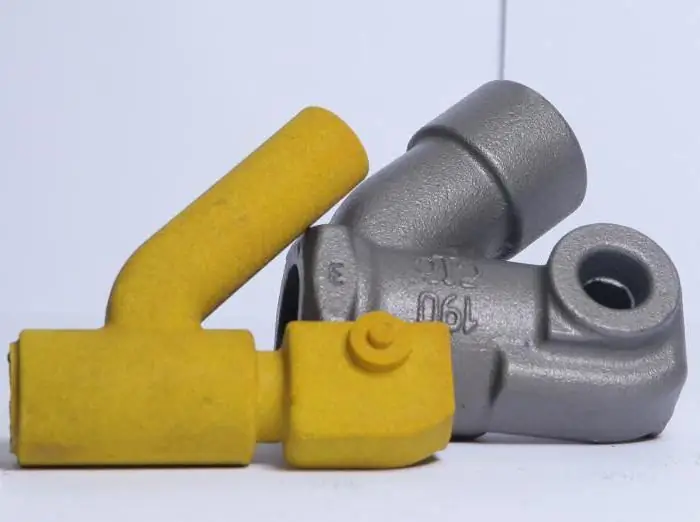2025 Author: Howard Calhoun | [email protected]. Last modified: 2025-01-24 13:10:39
Casting in shell molds is also called shell casting. And abroad, this method of work is called Shell.
General information
In today's industrial industry, many different casting methods are used. In addition to shell casting, investment casting is also used, as well as in metal molds and several other methods. The overall advantage of these casting methods, when compared to sand molding, is that they result in more accurate end materials in terms of shape as well as dimensions. In addition, the number of roughnesses on the surface of such products is reduced. In more rare cases, but still it happens that the need for subsequent machining after smelting is eliminated. In addition to everything, the use of casting in shell molds and other methods contributes to the fact that this process can be mechanized as much as possible, as a result of which its automation also increases. And this, of course, greatly increases the productivity of any industrial facility.
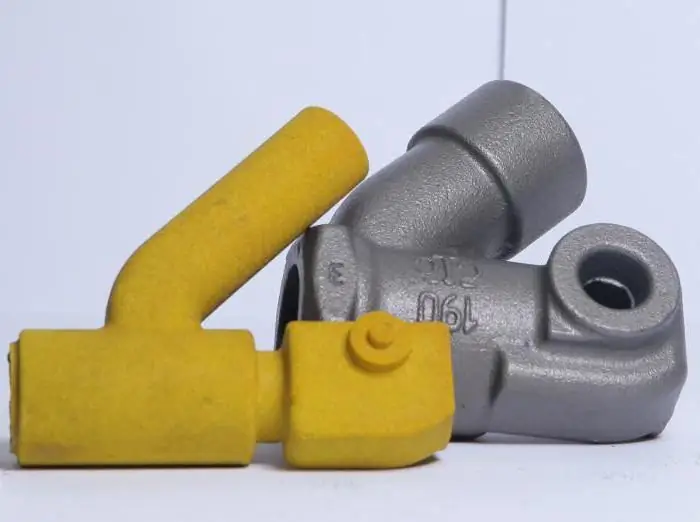
Shell casting
If we talk specifically about thismethod, it was first introduced at factories back in 1953. At present, the method is used quite widely. It is casting in shell molds, for example, that produces most of the parts for the Kirovets tractor. All parts that are produced using this method are of the highest quality from steel or cast iron. Shell casting is a method in which the final result of the casting has a shape consisting of two sand-resin shells. Also, this method of manufacturing parts is used only in cases where it is necessary to create a part with small or medium dimensions, but at the same time with high accuracy. Examples of applications for this casting method can be engine parts or thin-walled castings.
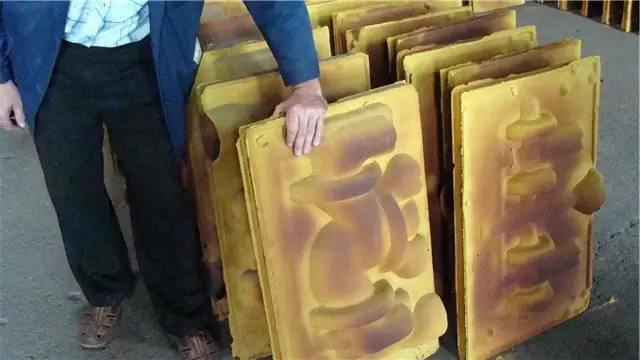
The Essence of the Way
Various parts for fans, motors, pumps or textile machines can be obtained by using this working method. However, the maximum length of the product received cannot exceed 1 meter, and it cannot be heavier than 200 kg.
The essence of casting into shell molds is based on certain properties of thermosetting resins, which are part of sand-resin mixtures. The advantage of using such components is that these resins tend to quickly and permanently harden when treated with a temperature of 200-250 degrees Celsius.

Making a shell mold for casting
In order to make a mold for subsequent casting, it is necessary to have fine-grained quartz sand, which comes with the addition of a thermosetting resin, which is its connecting element to obtain a full-fledged shell mold. These materials, in particular the resin, are chosen because they harden when they pass a certain temperature barrier. The manufacturing process is as follows. First, the resin is heated to 140-160 degrees Celsius. Under the influence of such an environment, it turns into a liquid adhesive mass that completely envelops the quartz sand mold.
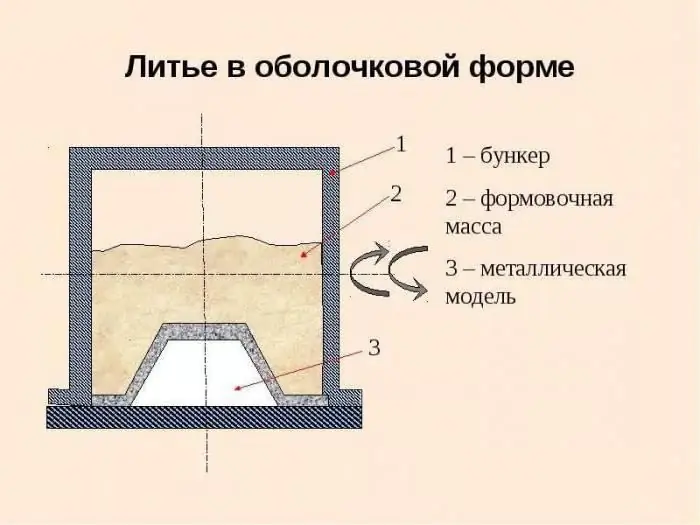
The scope of casting in shell molds is quite wide, and therefore the process of making molds is brought to automatic or automated.
After the mold is completely covered with resin, the temperature is increased to 200-250 degrees Celsius. This temperature threshold is quite enough for the adhesive mass to irreversibly harden and form a shape. Further, when the process of casting parts begins, that is, when the molten metal enters the mold, the temperature in it reaches about 600 degrees. This mode is enough to ensure that the resin does not melt, but burns out, while leaving pores on the mold itself, facilitating the escape of gases.
Advantages and disadvantages of shell mold casting
Like any other manufacturing process, this one has its pros and cons. If we compare this method of casting, for example, with casting inordinary sand molds, there are several advantages:
- The first and rather significant difference is the accuracy class, which is 7-9. In addition, the surface finish of the obtained part is improved up to 3-6. In addition, the allowances that are allowed for subsequent machining of the resulting part after casting are reduced.
- One of the big pluses is a significant reduction in labor costs for the manufacture of castings.
- This casting method reduces the consumption of molding materials, as well as the amount of metal due to the fact that the size of the gate channels is reduced.
- Significantly reduced the amount of marriage output.

However, there are some disadvantages of casting in shell molds. These include:
- Shell mold life - 1 casting.
- The cost of molding sand is quite high.
- High percentage of harmful gases.
Corpus forming process
The body forming process is carried out in six stages:
- The first step is the process of pouring the mixture onto a hot metal model, as well as the process of keeping it for several tens of seconds until a thin, strong crust forms around the part. Most often, models are made of cast iron, and their heating is carried out up to 230-315 degrees.
- After that, it is necessary to carry out an operation to remove excess molding sand. The thickness of the crust should eventually be from 10 to 20mm. It depends on the residence time of the mixture on the model, as well as on the temperature.
- After that, it is necessary to transfer the model plate together with the mold to the oven, where they will be until the end of the curing process. At the end of this procedure, the strength of the shell should be between 2.4 and 3.1 MPa.
- After being removed from the furnace, the hardened shell is displaced from the plate. A special pusher is used for this procedure.
- After that, two or more models are fastened together using some kind of clamp or by gluing. These molds can be used for casting in shell molds or simply stored. Almost unlimited shelf life.
- Before starting the casting process in the finished mold, shot is poured into them, which helps to prevent or destroy the mold during further pouring.

Casting Details
It is worth starting with the fact that typical tolerances that are allowed in the manufacture of tooling can be 0.5 mm. Surface roughness is allowed in the range from 0.3 to 0.4 microns. Such limits are justified by the fact that fine-grained sand is used. Also worth noting: the use of resin greatly contributes to the fact that the surface is very smooth.
Production volumes
In order to be engaged in the production of such molds and parts, it is necessary to attend to the installation of a mold model. The time required for installation is less than a week. After installation is completed, the output quantity canreach from 5 to 50 pieces per hour. Such production volumes per hour are quite real, however, for this it is necessary to prepare the casting process accordingly. The main materials that will be required for casting are cast iron, aluminum, copper, as well as alloys of these types of metals. Another necessary material will be an alloy that uses aluminum and magnesium.
Recommended:
Cash and credit operations of banks. Types of banking operations

The main operations that a commercial bank performs are credit and cash. What are their specifics? According to what rules are they carried out?
Casting in silicone mold: equipment. Vacuum casting in silicone molds
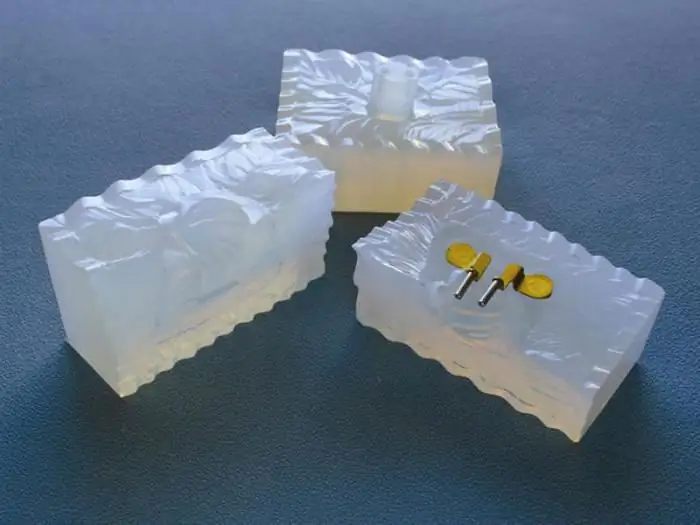
For the manufacture of a small number of plastic blanks, vacuum casting into silicone molds is most often used. This method is quite economical (making a metal mold requires more time and money). In addition, silicone molds are used repeatedly, and this also significantly reduces the cost of production
Casting mold: features, technology, types

One of the most important processes in the industry is the process of casting various parts, raw materials and other things. However, in order to successfully produce the desired thing, it is necessary to make a mold for it, which largely determines the final result
Gating systems: types, device. Casting mold
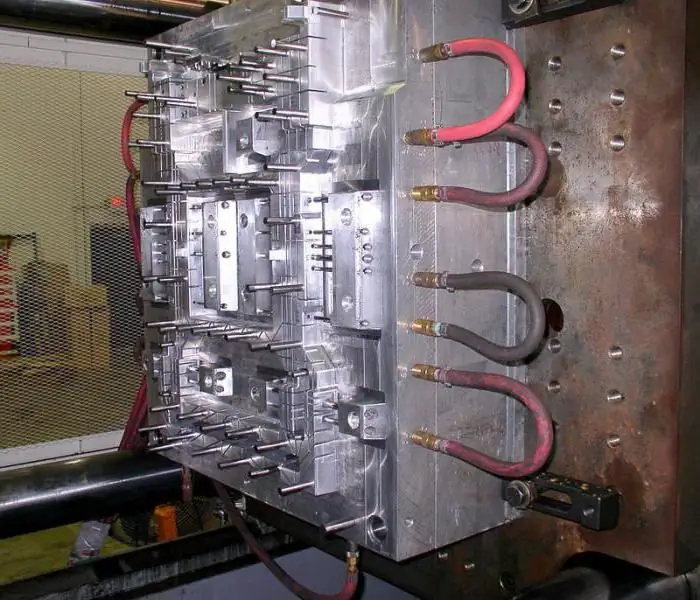
Gating systems: principle of operation, description, features, device, operation. Mold for casting: purpose, characteristics, photo
Types of banking operations. Settlement and cash services. Operations of banks with securities

Before you know what types of banking transactions exist, you need to understand some of the most important definitions. For example, what is the institution in question itself? In modern economic terminology, the bank acts as a financial and credit unit that performs all kinds of operations with both money and securities

